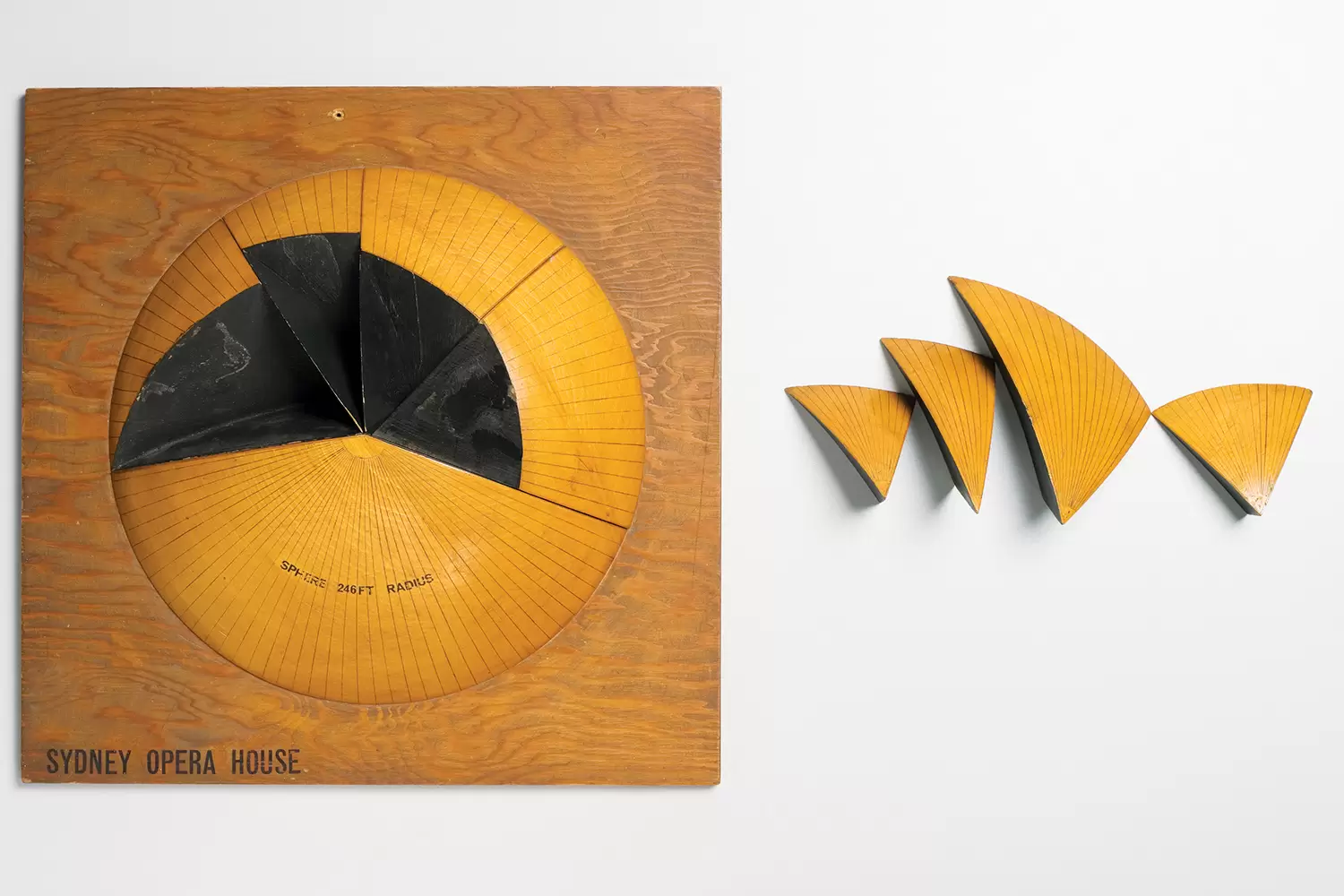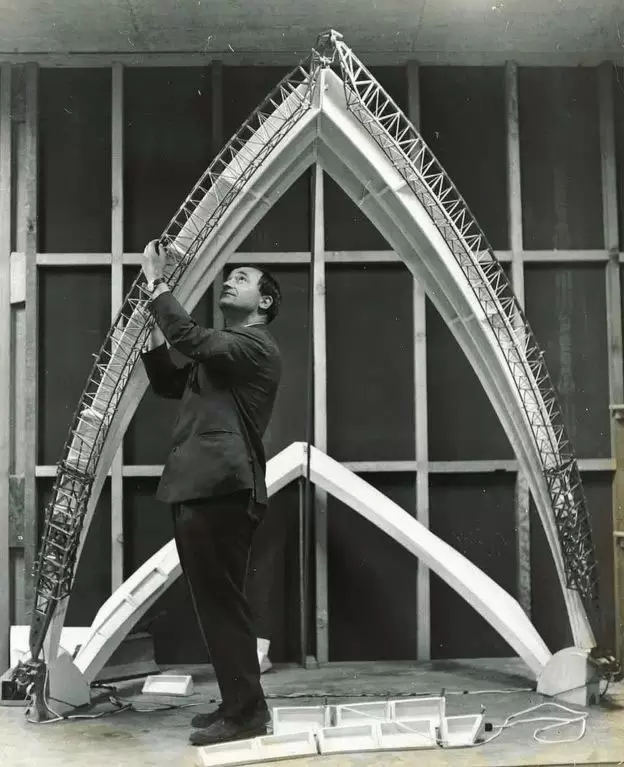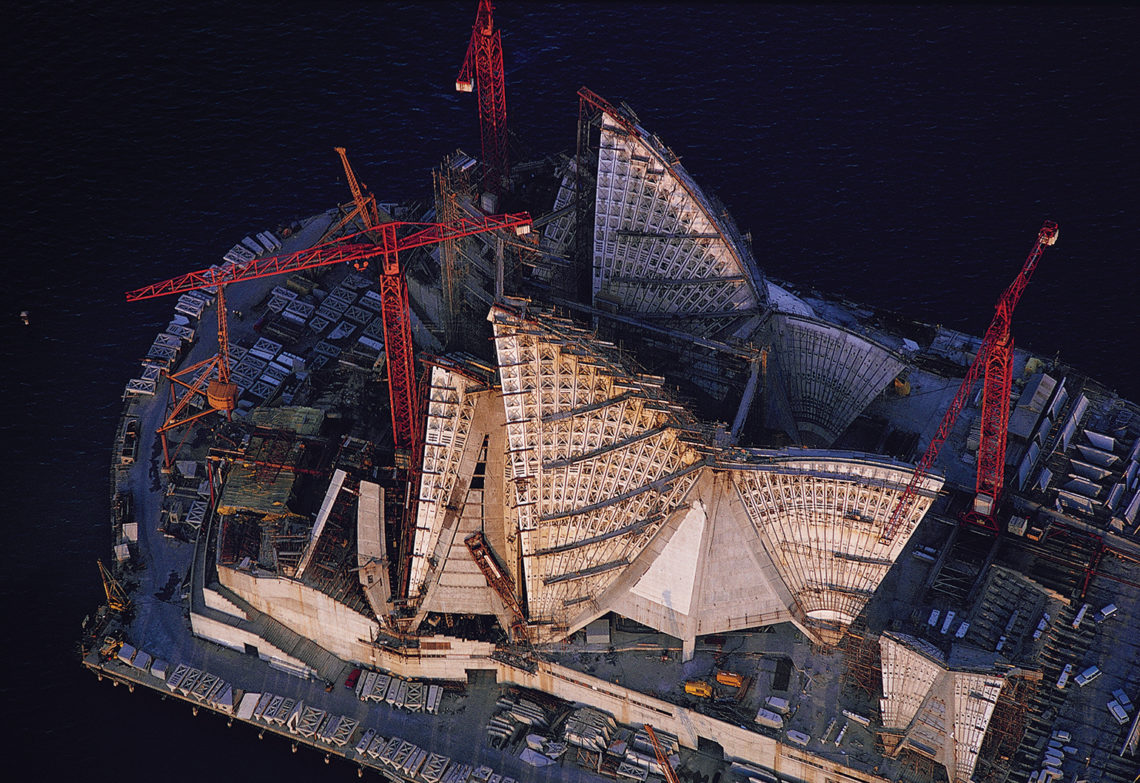Architect Jørn Utzon’s famous design for the Sydney Opera House is recognised all over the world, but it took the ingenuity of dozens of engineers to bring it to life.
When Danish-British engineer Ove Arup was tasked with turning architect Jørn Utzon’s plans for a new Sydney Opera House into reality, he assigned 55 engineers to solving the tricky mathematical and technical problems involved.
Inspired by sailboats and swans and drawing on the settings of Mayan pyramids and a castle positioned on a Danish peninsula, Utzon’s sketches were chosen in a New South Wales Government-run contest seeking designs for a national opera house to be built at Bennelong Point.

Utzon’s design was graceful and expressionist, its sails invoking the boats and cliffs of Sydney Harbour. It was also formally and structurally challenging; when he submitted his competition entry, Utzon had not shown his drawings to an engineer to see if the concept could be created in reality.
“This is possibly just as well,” reflected Arup civil engineer Jack Zunz, the project’s Principal Structural Designer, in a 1987 lecture at the Royal College of Art, London.
“The distinctive sculptural quality of the building with its roof structure, often likened to billowing sails, was an essential, if not the essential part of his first proposals. Sound engineering advice might have persuaded him not to pursue these proposals because of the obvious difficulties and the possibility that the assessors might take fright.”
Utzon’s forms were “extravagant”, and membrane action — the internal tension from the shells’ thickness — was insufficient to sustain the arches against the forces to which they would be subjected.
“When we were appointed as consulting engineers for the project shortly after he received the commission for the job, we told him the technical facts of life,” Arup went on.
“But other suggestions all tended to destroy the basic sculptural quality and all our efforts were then directed towards solving the enormous problems which gradually emerged.”
Shell games
The sails — or shells, as they were called — were to be built using pre-stressed concrete, a versatile but demanding material that would need great precision to work the way it was supposed to.
Early on in the project, according to journalist Helen Pitt’s history of the building, The House, Utzon had bent a plastic ruler to show Ove Arup the form he wanted the shells to take.
“They had been trying to create the concept in concrete ever since,” Pitt writes.
“They simply didn’t know whether it was possible to build such a huge structure as the Opera House using pre-stressed concrete in the shape Utzon had drawn.”
Former Arup Chair Dr John Nutt explained the problem in Building a Masterpiece: The Sydney Opera House.
“The shells converged to points at the supports, concentrating the forces in an undesirable way,” he wrote.
“The ridges had sharp discontinuities of surface. Curvatures near the pedestals caused enormous problems which were not resolved until late in the design. Each shell had to be linked to its neighbour to achieve overall stability.”
Sails of the century
The roof would go through 12 different iterations during this design stage, transforming from its original freeform shape through parabolic and ellipsoid proposals. Arup stressed the importance of repeatable geometric shapes that could underpin the design and be fabricated easily from concrete using a mould.
The solution came to Utzon in 1961 while he was back home in Denmark. Yuzo Mikami, an architect who worked with Utzon before joining Arup, describes Utzon dismantling a model of the Opera House and stacking the shells together, despairing that construction might be impossible.
“The curvatures of the shells, which he thought to be quite different from one shell to the other, were more similar to each other than he had thought all these years,” Mikami wrote.
“If they were so similar, why couldn’t they be cut from a common surface? In order to do that, the curvature must be the same in all directions. What is a geometrical body with constant curvature in all direction?”
The answer was a sphere. The shells would be triangles cut from sections of a single sphere, with the meridian lines of the sphere coming together to form “ribs”.

“The adopted structure was not a shell but an interconnected rib structure, the segments of which were factory-produced and joined in the air,” wrote Nutt.
“Each segment was of a size which could only be handled by a crane. Nothing quite like it had ever been done before. The changing profiles of the ribs became the architectural theme of the roof.”

Now that Utzon had figured out a way his shells could actually be built, Arup’s engineers had to figure out how to make them work. Of the many minds that set about solving the problems in this process, one that stood out was Joseph Bertony, a civil engineer who had emigrated from France after World War II.
The engineer who came in from the cold
Born in Corsica in 1922, Bertony studied naval engineering before joining the French military after the outbreak of World War II.
He was quickly recruited by the Allied forces as a spy, and when he was captured by German forces, he was sent to a Nazi concentration camp in Austria.
During a transfer, he was able to escape back to the French military, but he was captured again and sent to the Buchenwald death camp, where he was forced to work making bombs.
As Allied forces approached to liberate the camp, the Nazi guards began rounding up prisoners to murder them; only a fortunate escape from a transport train saved Bertony’s life.
At age 31, Bertony left Europe for Australia, bringing his engineering expertise with him.

Employed by Hornibrook, the Queensland construction company that worked on the Opera House, Bertony was tasked with figuring out how to design the steel erection arch that made construction of the roof possible.
It took 30,000 mathematical equations to determine the stresses that could be applied to the roof, and Bertony did them all — by hand.
They had to be accurate to 1.5 cm, and so a Hornibrook colleague, David Evans, fed Bertony’s equations into the one computer in the country that was powerful enough to handle them.
Every single one was accurate.
“It could be argued that Hornibrook chief Corbett Gore could have found another person, or a team of people, to do what Joe did,” Pitt quotes Evans as saying.
“But I doubt if there was anyone with Joe’s genius to see how to develop the telescopic truss and to build the ribs with it.”
But the most notable aspect of these engineering solutions was how many different people contributed. Gore himself solved the difficult problem of how to raise the shells and join them in place — he used a fast-sticking epoxy resin.
“I knew we had the roof licked when we nutted out a way to stop roof tiles creeping on the curved surface,” he told a Sydney newspaper at the time.
He celebrated up on the roof.
“I took with me an Australian flag, a Hornibrook house flag and a bottle of champagne. I didn’t break the bottle on the roof; instead I drank it,” he said.


![(Image: Max Dupain/Mitchell Library, State Library of New South Wales [ON 562])](https://createdigital.org.au/wp-content/uploads/2019/12/create-online-mag-sydney-opera-house-4.jpg)
![(Image: Max Dupain/Mitchell Library, State Library of New South Wales [ON 562])](https://createdigital.org.au/wp-content/uploads/2019/12/create-online-mag-sydney-opera-house-3.jpg)
![(Image: Max Dupain/Mitchell Library, State Library of New South Wales [ON 562])](https://createdigital.org.au/wp-content/uploads/2019/12/create-online-mag-sydney-opera-house-5.jpg)

